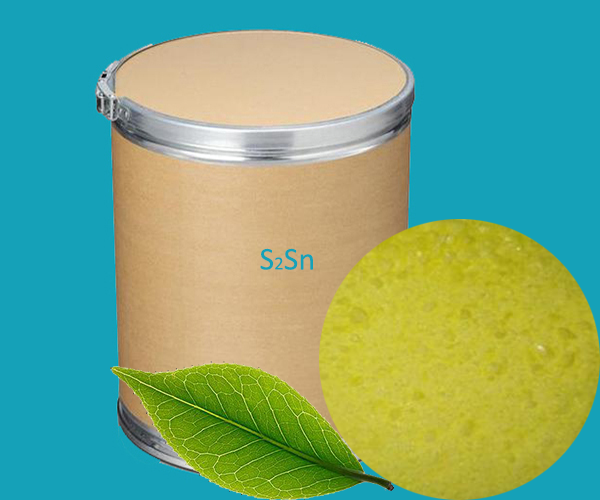Tin Sulfide, also known as tin disulfate, is an important inorganic compound with many important applications and synthesis methods. It has the chemical formula S2Sn and is a golden-yellow hexagonal crystal or yellow amorphous solid with a density of about 4.5 g/cm³. Tin disulfate is stable in air and is not easily oxidized, but it will decompose at high temperatures.
The physical properties of tin disulfate include higher density and lower solubility. It is almost insoluble in water, but it can be dissolved in aqua regia and alkali metal sulfide solutions to produce the corresponding thiostannate salt.
Applications of Tin disulfate (SnS2) are shown as below:
1. Photovoltaic cells and thin-film solar cells: Tin disulfate is an n-type semiconductor material with a wide bandgap (about 2.35eV), which makes it suitable for use as an absorber material for solar cells. Due to its high absorption coefficient, bandgap width similar to that of silicon, and environmental characteristics, it is widely used in the photovoltaic field.
2. Photocatalysis: Tin disulfate also has important applications in the field of photocatalysis, such as as as a catalyst in photocatalytic water splitting reactions for the production of hydrogen.
3. Catalyst: Tin disulfate can be used as a catalyst, e.g. in fuel cells for hydrogen generation.
4. Nanocomposites: It can be used to prepare various nanocomposites, such as composites with cobalt tetroxide, which have potential applications in fields such as catalysis, electronics, and energy storage.
5. Pigments and gold-like materials: Due to its golden-yellow appearance, tin disulfate is also used to make pigments and gold-like materials.
6. Photocatalysts and adsorbents: Tin disulfate and its composites also have applications in environmental purification, such as for removing pollutants and purifying water quality.
7. Other applications: including applications in electronic and optical devices, as well as as the object of chemical and materials science research.
 English
English Español
Español Português
Português Français
Français Deutsch
Deutsch Русский
Русский 中文
中文 日本語
日本語
